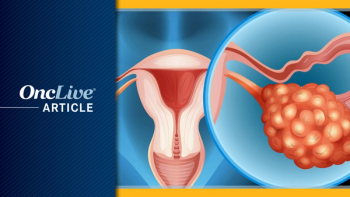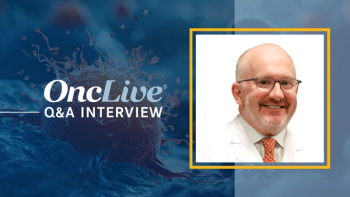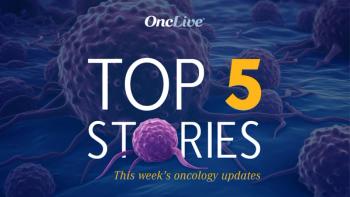
Optimizing BRCA Testing in Advanced Ovarian Cancer
Transcript:Kathleen Moore, MD: The timing of when you do testing for BRCA has become a very hot topic with the publication of SOLO-1, which is a big randomized study that really demonstrates unprecedented benefit to use of olaparib maintenance therapy following induction chemotherapy in frontline patients.
And so prior to that we all knew we should be doing testing, and in the United States we still were nowhere near 100%. But people were doing it whenever in the disease course, trying to get the testing done.
SOLO-1 really mandates that it be done near the time of diagnosis. It doesn’t have to be done before you initiate chemotherapy. You can get a woman diagnosed, through surgery, and on to chemotherapy and on the treatment path so that she feels comfortable with her treatment plan and a little settled. It is a lot to throw at someone all at once, a new diagnosis. “Oh, by the way, we’ll do genetic testing.”
But after a few cycles, when people are feeling better—usually women feel better once they start chemotherapy—then that testing should be done so we can identify patients who would benefit from a PARP inhibitor for maintenance. So there are various strategies. Some are looking at just testing the tumor right out of the operating room. And if they have a BRCA mutation, either a germline or a somatic, you’re going to catch it in that tumor, and then you can discuss genetic counseling again when someone’s ready to hear that conversation. Some people are going right to germline testing and trying to do it earlier.
But it really needs to be done now in newly diagnosed patients as close to diagnosis as is reasonably possible to make sure women feel they’ve been counseled about it. And then in everybody else it just needs to be done as soon as you see the patient at the next visit. There’s really just no excuse for not testing or offering testing to every patient with epithelial ovarian cancer so we can identify these women, but it needs to be done early now.
If you have a germline mutation, it’s going to be in your tumor, you’re going to find it there. A purely somatic mutation, or tumor mutation, is nowhere else in the body. It’s just developed with the cancer, so it didn’t cause the cancer, but it developed just from the genomic instability that is a hallmark of cancers. You end up with a deleterious BRCA mutation, so it develops with the cancer.
So you’ll pick up both. If you just do a tumor test, you will pick up all your germline cases—you’ll pick up almost all your germline cases, not all but most of them, about 95%—and you’ll pick up the somatic cases as well. And then you can reflex those that are positive to germline testing.
The risk with doing that alone and not following everyone up with their germline test is that you’ll miss about 5% of germline mutations by solely looking at the tumor. And that’s mainly because tumor tests don’t pick up large rearrangements that are associated with germline BRCA mutations, so you’ll miss those on a tumor test. And then with various tumor testing, there are a number of assays, and they’re all different, so they have different ways of classifying variance, and they have different call coverage over what genes they call as deleterious.
So there are differences there. It’s pretty consistent now, study to study, you miss about 5%. And so if you miss those germline patients, then you of course miss the opportunity to do cascade testing and get them access to PARP inhibition. It’s a small number, but it’s an important number. At this point we’re honestly doing so poorly in the United States, and we just need to test everybody with something. We just need to get testing done.
And as we get closer to 100%, let’s focus on the 5%. But because of SOLO-1, a lot of healthcare systems are developing and testing algorithms, which is great, so they can standardize it. But in those settings we are developing a testing algorithm that all your physicians in a big network, say, are going to follow. They have to pay attention to that now and decide whether or not 5% is an OK percentage to not identify, or if they are going to do dual testing and require that among all people. I think it’s great that we’re having the conversation because I think the word is getting out and there’s a lot more pressure to test and a lot less tolerance of not being tested. I think that among patients as well, patients are saying, “Hey, I’ve never been tested,” and they’re coming in and asking about it, as they should be. So it’s a good conversation that we’re having on how we optimize testing. But it’s going to be, I think, a work in progress.
Transcript Edited for Clarity

























































































